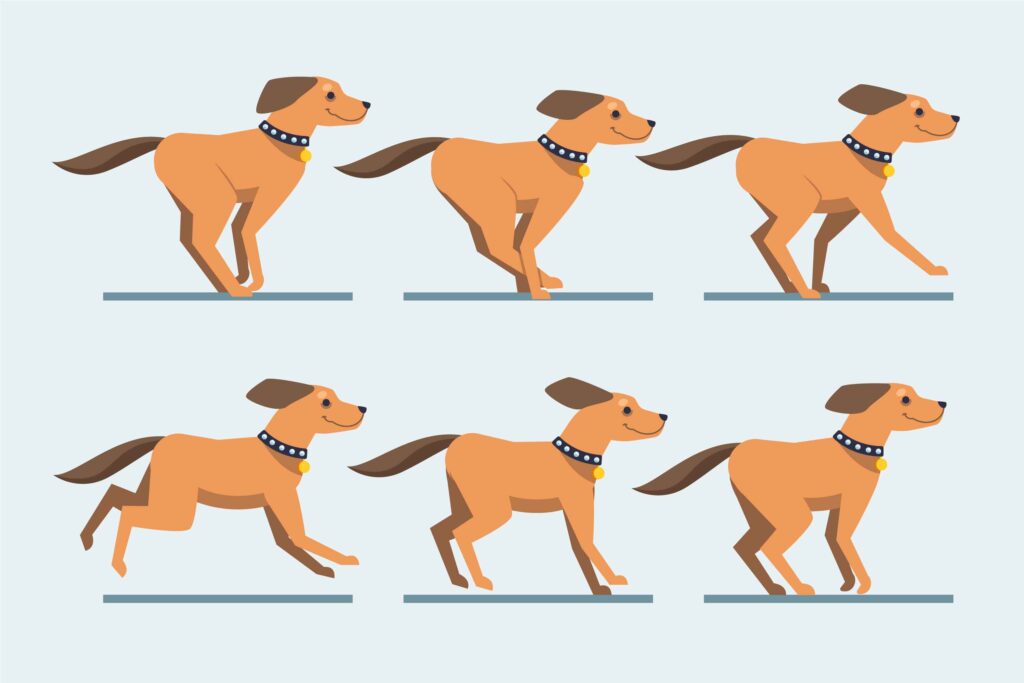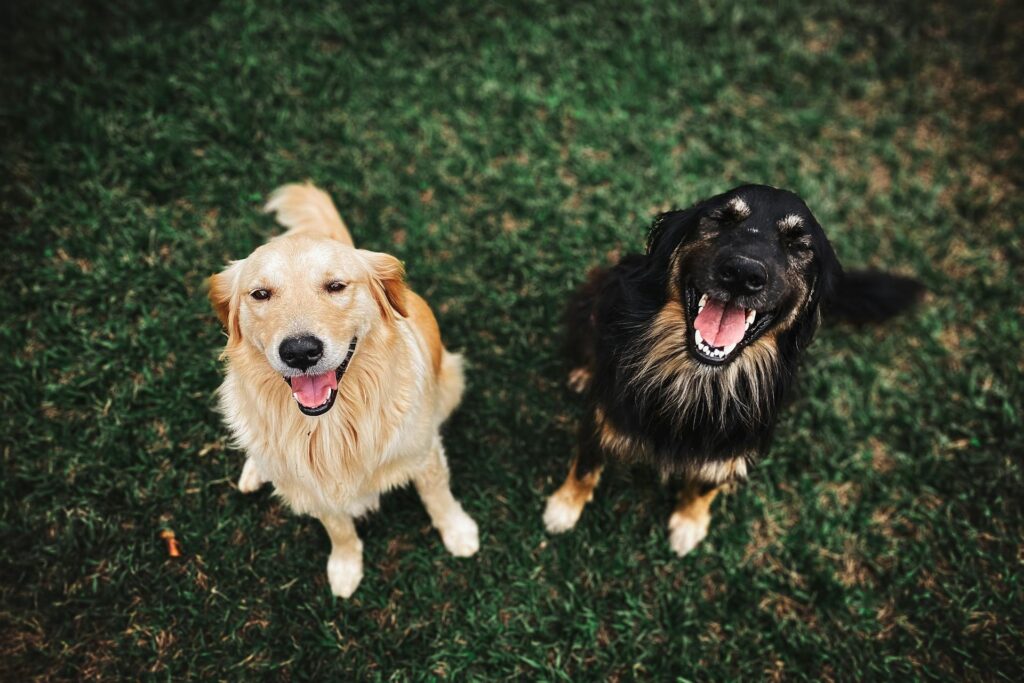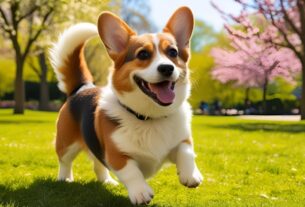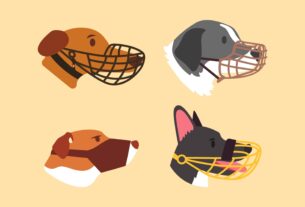Dogs may not speak our language, but they’re always talking—and their tails are doing a lot of the talking for them.
A dog’s tail is one of its most expressive features, offering insight into its emotions and intentions. The position, movement, and speed of the tail all play a role in canine communication.
A tail held high often signals alertness, confidence, or excitement, while a low or tucked tail usually reflects fear, submission, or insecurity. Even the direction and speed of a wag can speak volumes—ranging from happiness and curiosity to stress or potential aggression.
Does a Wagging Tail Always Mean a Happy Dog?
Not exactly! While many people assume a wagging tail means joy, it’s not always the case. Dogs have a whole vocabulary built into their tails, and each wag can mean something completely different. From excitement to anxiety, a dog’s tail is one of the most expressive tools in the canine communication toolkit.
Surprisingly, dogs aren’t born fluent in tail talk. Just like human babies have to learn words, puppies must learn what different tail movements mean. Around four weeks old, a puppy starts using his tail to “talk” to his mom and siblings. Maybe he’s saying he’s done playing or letting Mom know it’s mealtime. That wag? It’s his first real sentence.

Why Do Dogs Wag Their Tails to Communicate?
Dogs wag their tails to communicate because they rely heavily on body language rather than spoken words. Unlike humans who use verbal language to express thoughts and emotions, dogs are visual communicators. Their eyes are more sensitive to movement than to fine details or color, making tail wagging a highly visible and effective way to signal their feelings.
Tail wagging works well because:
- Dogs instinctively notice movement, so a wagging tail catches attention quickly.
- Many dogs have tails with features—like bushy fur, light undersides, or color tips—that make the movement more noticeable.
- Evolution has favored tail traits that enhance visual communication between dogs.
In short, wagging is a natural and efficient way for dogs to express emotions such as happiness, fear, curiosity, or tension, especially in social situations with other dogs or humans.

What’s a Wagging Tail Really Saying? Decode Dog Talk Like a Pro
Forget the old “wagging tail means happy dog” myth — canine tail talk is way more nuanced. Before you jump to conclusions, remember: every breed has its own default tail vibe. Some dogs rock tails low and loose, others curve theirs under their belly or coil them tight like a spring. So first, know your dog’s baseline.
Tail Positions: The Mood Meter
- High and Proud: Tail up, ears perked — your dog is on alert, ready to face whatever’s coming. It’s their “I see you” stance. But heads up: the higher the tail, the more serious the message. Raised tails also pump out more scent to mark territory, basically saying, “This is mine.”
- Frozen Wag: When the tail suddenly stops wagging and your dog goes stone still, they’re probably sending a subtle, “Let’s not get weird” vibe. A polite “I’m not up for this interaction.”
- Low and Loose: Tail dipping means submission or chill mode. If that tail’s tucked tight between the legs? Fear is the headline — your dog’s saying, “Please don’t hurt me.”
- Horizontal Tail: Curious pup alert! Tail stretched straight out means they’re intrigued, eyes on the prize.
- Neutral to Slightly Raised + Wag: The classic happy dance. This is your dog saying, “Life’s good, I’m good.”
Wag Speed: The Emotional Turbo Boost
- Fast and Furious: Tail wagging at lightning speed? That’s pure excitement — think “I’m so pumped I can barely contain it!”
- Soft and Slow: A timid little wag is more like, “I’m not sure about this… but I’m willing to try.”
- Full-On Wiggle: When the tail is wagging freely and the hips get involved? That’s best friend energy, total friendliness on display.
- Rapid Wag + Tail High: Warning! This could be a “Back off!” signal wrapped in tail talk. A dog wagging this way might still be a threat.
Direction Matters: Left vs. Right Wag
Here’s the neuroscience twist: dogs wag right when they feel good and confident — that’s the left brain (love and chill) in action. But wag left? That’s the right brain, signaling stress, fear, or discomfort. So next time you see a wag, watch which way the tail swings — it’s telling you how your dog really feels.
Bottom line? A wagging tail is not a universal “I’m happy” sign. It’s a complex language of emotion, intent, and context. So next time a dog wags, channel your inner canine whisperer and read all the signals before diving in.
Can tailless dogs communicate?
So, what happens when a dog’s rocking a tailless look? Does that mean their social skills take a hit? Not at all. Dogs without tails do communicate — they just get creative.
Without the tail’s trusty wagging soundtrack, tailless dogs tread carefully around others, making sure their messages don’t get lost in translation. They lean hard into other body language cues: the way their ears perk or flatten, expressive eyes, and their stance — all crucial signals in their silent conversation.

Overview of Audiuance on Quora About Dog’s Tail
1- After countless hours at the dog park, here’s the real deal on tail wags — spoiler: it’s way less clear-cut than you think.
Don’t get caught up obsessing over tail movement alone. The truth? The meaning behind a wag is much fuzzier than most people assume.
- The happy, relaxed wag: Soft, slow to medium speed. This is your classic “all good” tail — and yes, it’s the one you’ll see most often.
- The “I’m feeling sick” wag: Low, barely moving, kind of lifeless. Usually shows up after your pup’s been puking.
- The “bad dog” tail: Tucked under, curled tight. But here’s the kicker—it’s less about guilt and more about submission in response to humans. Your dog might not have done a thing wrong, but a stern tone can make that tail tuck happen. This is where we humans love to anthropomorphize—big mistake.
- The anxious/stressed wag: Tight, fast, and lower than usual.
- The excited wag: Also tight and fast but generally held higher than the anxious wag. Here’s the tricky part: anxious and excited wags look super similar, and pups can flip between those feelings in a heartbeat.
And that’s basically it. The tail is just one piece of the puzzle. To really read your dog’s mood, watch other signals too:
- Those “moon eyes” (when the whites of their eyes show)
- Shoulder posture—are they tall and confident or crouched and defensive?
- Body tension or relaxation
In dog communication, the tail is important but never the whole story.
2- Tail Talk: Decoding My Dog Milo’s Personal Language
This applies to my dog. I’ve seen similar patterns in other dogs, but I won’t pretend it’s universal. If you want to understand your dog, the real key is to watch—not just the tail, but the whole body. That’s where the real conversation happens.
Here’s what I’ve learned from countless tail wags, subtle glances, and dog park adventures with Milo:
- Vertical and wiggling like a flag: He’s over the moon. If it’s me walking through the door, that tail’s saying, “Welcome home, pop!”
- Straight up, no movement: This is his “I’m the boss” or “watch yourself” mode. A clear signal to others that he’s on alert and in charge.
- At a 60° angle with wiggle: A warm welcome—but more reserved. This one’s for the rest of the family: my wife, daughter, or son.
- Wiggling straight across (horizontal): Pure joy. This is how he greets his dog buddies—whether they’re coming for a playdate or we’re off to the forest together.
- Below horizontal wiggle: Uneasy. He’s anxious, maybe even a little afraid. This shows up when strangers enter our space—like contractors or delivery drivers.
- Tail tucked tight between legs: Guilt or discomfort. This happens after a brief time-out or when he’s devoured something mysterious in the woods. He knows.
- Slow wag at 30°, leaning left: Hesitant. Not quite sure about a guest in the house. Uncertainty, not fear.
- Slow wag at 30°, leaning right: Curious and interested. He’s figuring things out, probably deciding if this new person has treats.
- Up-and-down thump on the floor (while sitting): Dinner’s on the way. That tail is a dinner bell.
- Side-to-side wiggle (seated): “I want more snacks, please.” Begging? Maybe. Adorable? Definitely.
- Tail down + one front paw up + wag: He’s confused, not scared—just processing.
- Tail between legs + one front paw up + wag: That’s fear. Fireworks are the usual trigger. It’s heartbreaking and clear as day.
- Lying on his side, tail wagging: “Belly rub, please.” It’s the universal dog request.
- Sitting with tail wagging and one paw up: “Scratch right here, human.” Usually the chest.
Dogs are brilliant communicators if you take the time to listen—and Milo is no exception. With observation and a bit of patience, their entire emotional world unfolds before you. The tail is just the starting point.
FAQs: Cracking the Code of Canine Communication
Q: What is my dog’s tail saying?
Your dog’s tail is a built-in mood meter. A high, wagging tail usually means excitement or confidence. A low or tucked tail could signal fear, stress, or submission. The speed, height, and direction of the wag all matter—think of it as a sentence your dog is writing with every swish.
Q: How do you say “I love you” in dog language?
Dogs don’t say it with words—they show it. A soft gaze, a gentle lean into you, a relaxed body, and yes, a happy tail wag when you walk in? That’s pure love. Want to say it back? Try slow blinking, gentle petting in their favorite spot, and speaking in a calm, warm voice.
Q: How do I read my dog?
Look beyond the tail. Pay attention to the whole body: ears, eyes, mouth, posture, even how they breathe. Is the body relaxed or tense? Are the ears perked or pulled back? Are they leaning in or backing off? Reading your dog is about connecting all the cues—not just the wag.
Q: What is the language of a dog’s tail?
It’s nuanced. A slow wag at mid-height can mean uncertainty. A fast, stiff wag low to the ground may signal anxiety. A high, fast wag is excitement—maybe happiness, maybe overstimulation. Think of the tail as one part of a larger symphony of canine emotion.
Conclusion
So, what is your dog really saying with that tail? It could be a warm “hello,” a subtle “I’m nervous,” or even a bold “this is my turf.” But here’s the golden rule: never read the tail alone. Combine it with your dog’s ears, eyes, posture, and vibe.
Tails’ language is just one part of a beautiful, complex communication system—and you’re lucky enough to be learning it. Watch closely, stay curious, and remember: when your dog’s tail wags just for you, it’s saying a whole lot more than words ever could.
You can also see Do Pets (Dogs) Dream?




